A football drill is a rendered design of a coach’s interpretation of the game. It is exercised to perfect the players’ ability into the desired system. The challenge, however, is for the coaches to come up with the right ideas to get the best out of their players. The question remains, what can influence and trigger these ideas? Answer: The game itself.
The game of football is a string of concurrent actions and reactions (instances). Each instance is a bundle of information which can inspire different ideas. The coaches can thus examine any instance of the match to yield a coaching objective.
Mark Twain quoted in his autobiography, “There is no such thing as a new idea. It is impossible. We simply take a lot of old ideas and put them into a sort of mental kaleidoscope. We give them a turn and they make new and curious combinations. We keep on turning and making new combinations indefinitely, but they are the same old pieces of coloured glass that have been in use through all the ages.”
In this tactical analysis, the aim is to breakdown match moments, learn the principles of the move and then construct effective coaching drills from it.
Identifying match events
An event in a game can broadly be positive for one team and negative for another. Example of an event: Successfully progressing the ball from the defensive third to middle third against a high press. In this instance, the positive event occurs for the team in possession as they managed to progress the ball and negative event for the pressing team.
If the pressing team wins the ball then the events are reversed. The events can be seen as a macro tactic or as a micro tactic depending on what the coach wants. A positive event can be replicated to train a successful move whereas a negative event can be used to improve team performance or exploit opposition weakness. In either case, any event can be used to get a substantial coaching outcome if perceived in the right context.
The event that I picked for the analysis is a combination move. The event is not a recognised and defined combination as it is to show that any event can be coached. This also fosters new ideas and implications in the game and helps a coach be reinventive.
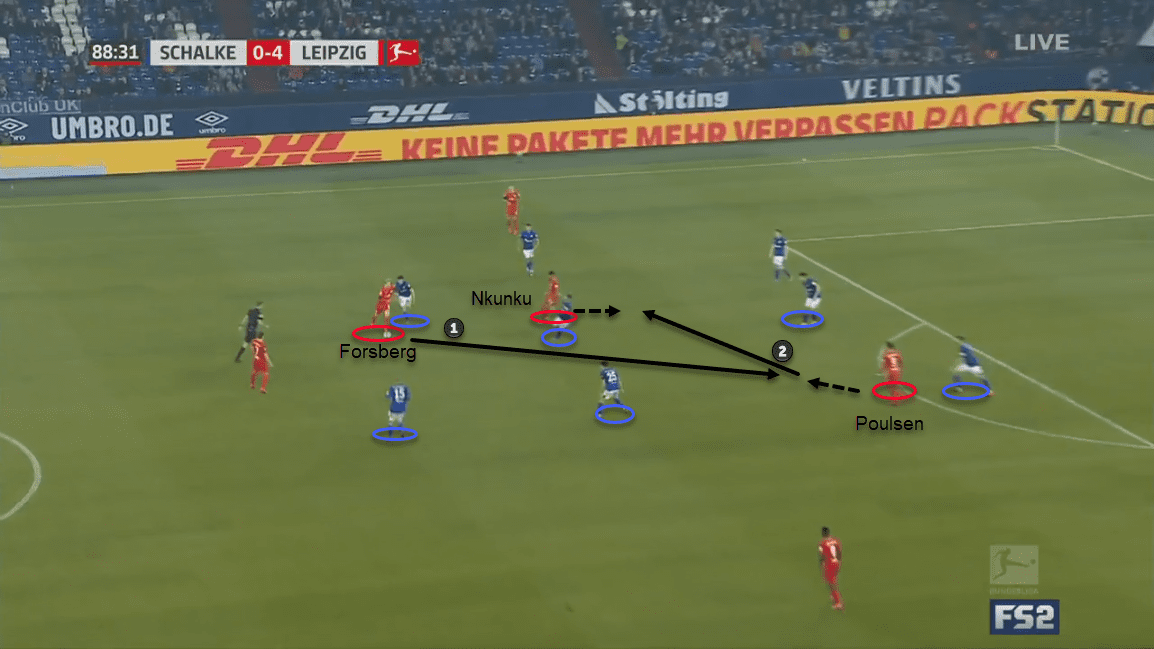
I took the event from the match between RB Leipzig vs Schalke 04 which happened last season. Poulsen supports Forsberg by coming short to receive the ball. He then plays a one-touch pass to Nkunku and makes a move towards the goal.
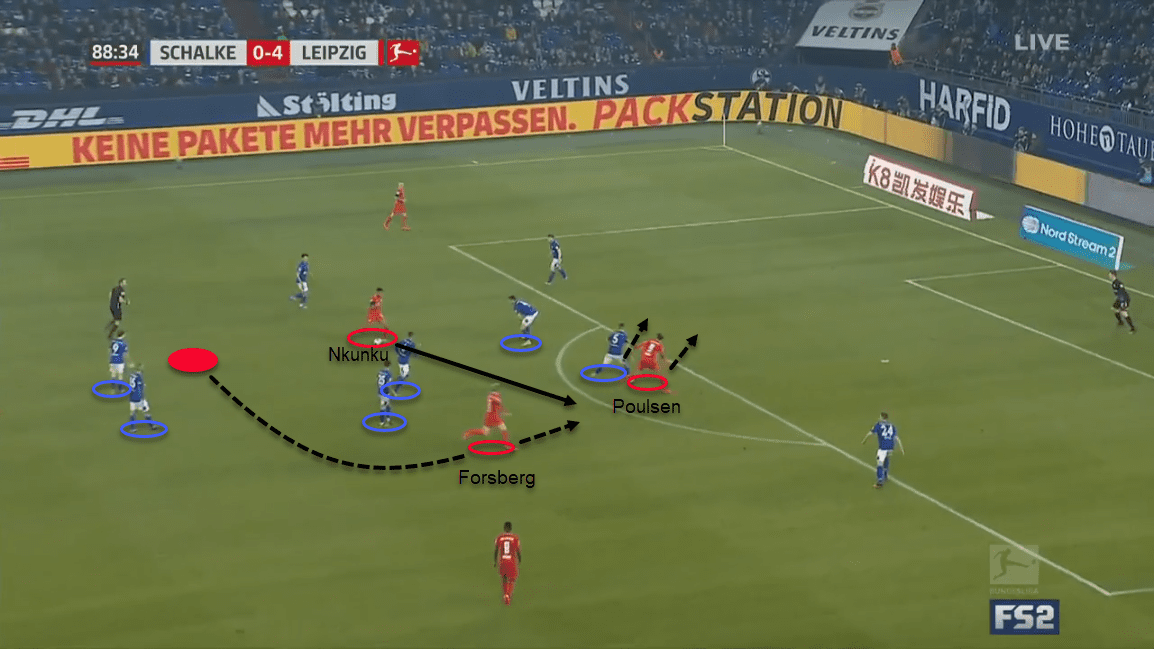
Nkunku finds Forsberg on the run, squares the ball to him.
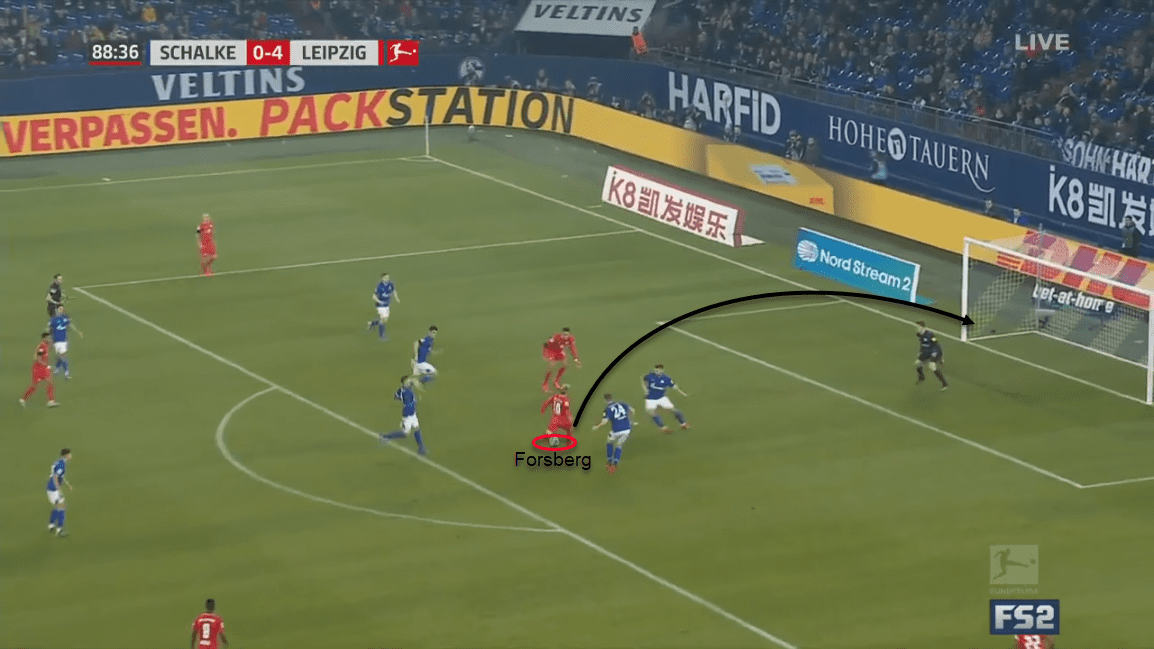
The move had three passes and it eventually led to a goal. Clearly, the objective was achieved for RB Leipzig and it makes a good event for coaching.
Static drill
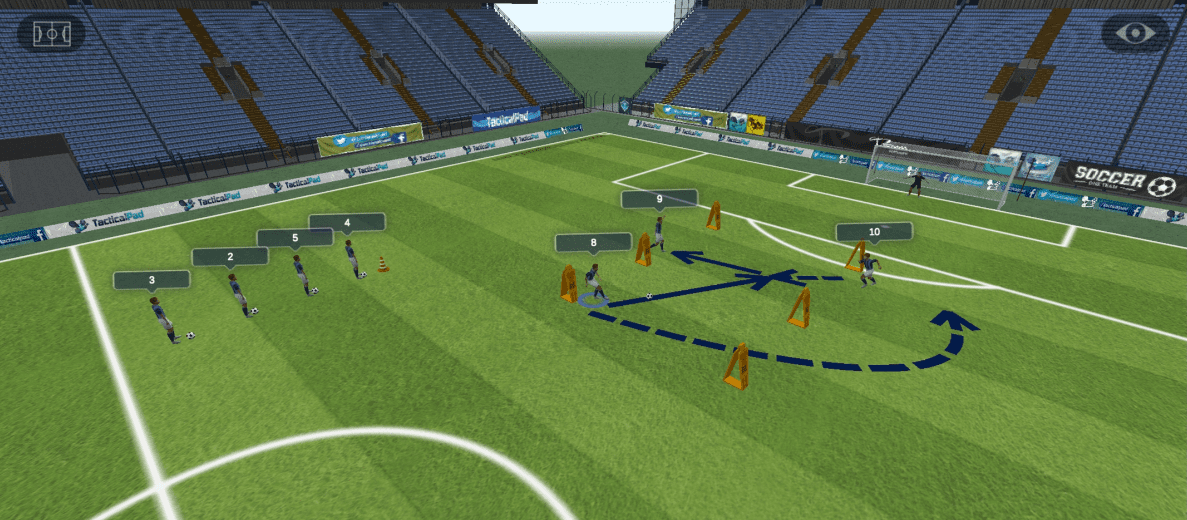
To design this drill, one way to go about it is to map the exact blueprint of the action on the field. It can be done simply by considering the active players in the play, which in this case are CM Forsberg, CAM Nkunku and ST Poulsen.
Since it’s an attacking exercise the opposition defenders in play are replaced by mannequins. As a result, you can simply create a static drill to practice the exact move.
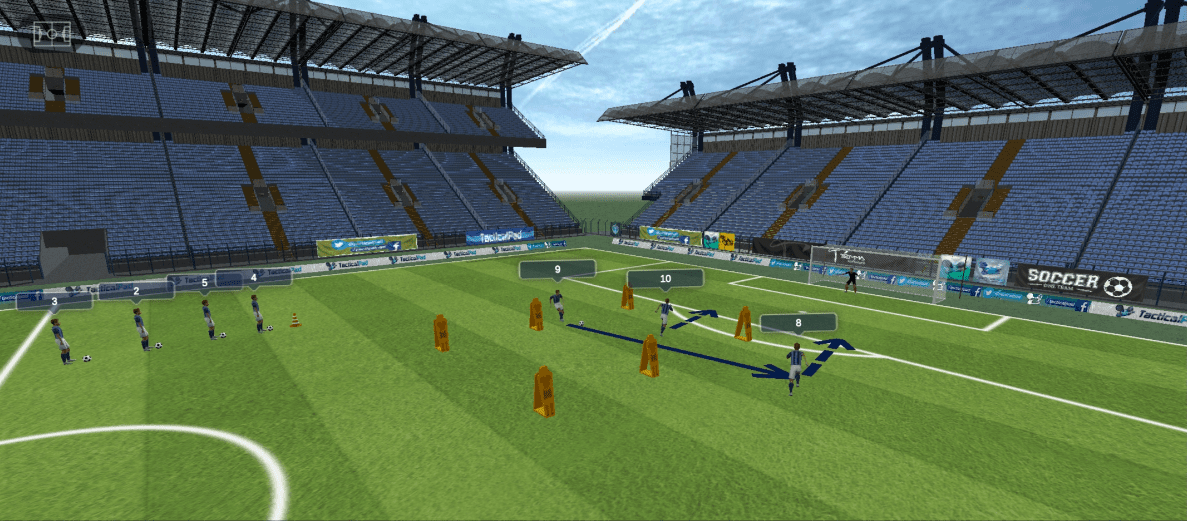
After the first round, no.4 goes to no.8’s position to start the move again, no.8 takes no.10’s position after shooting, no.10 goes to no.9’s position. No.9 collects the ball and joins the line. The exercise can have different variations in terms of combinations, angles and positioning. It is up to the coach to explore further progressions.
The reason it’s called a static drill is that the actions are predetermined, the players know what they have to do. The repetitive nature of the drill also helps in establishing a fixed style of play and develops the chemistry of the move.
This methodology is extremely effective when training for negative events. For example: The team that you are playing against next has conceded most goals from crosses. Then you must look at the crossing events in which they conceded the goal and replicate those to exploit the opposition’s weakness. At the same time, static drills can also be used to improve your team’s shortcomings once they are identified.
Principles of the event
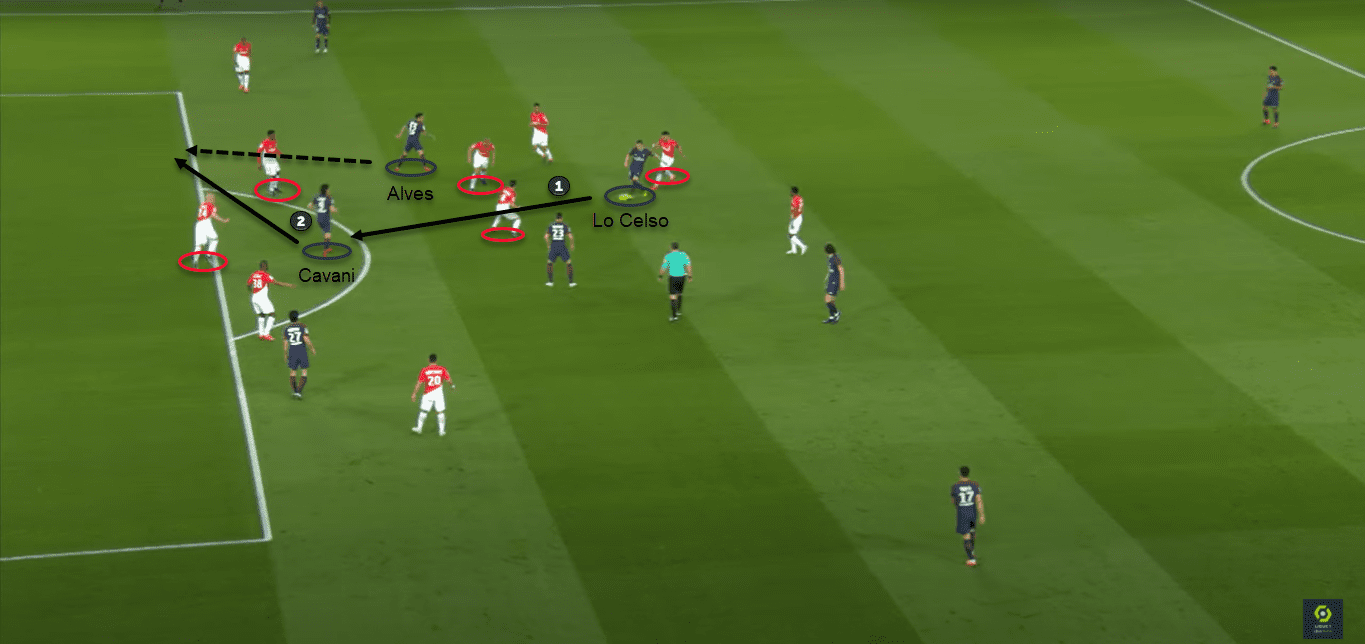
Fortunately, I came across a few more examples of this event like the goal scored by Lo Celso in PSG vs Monaco 17/18. The exact combination pattern leads to the goal. Lo Celso passed it to Cavani who found Dani Alves with a cheeky through ball.
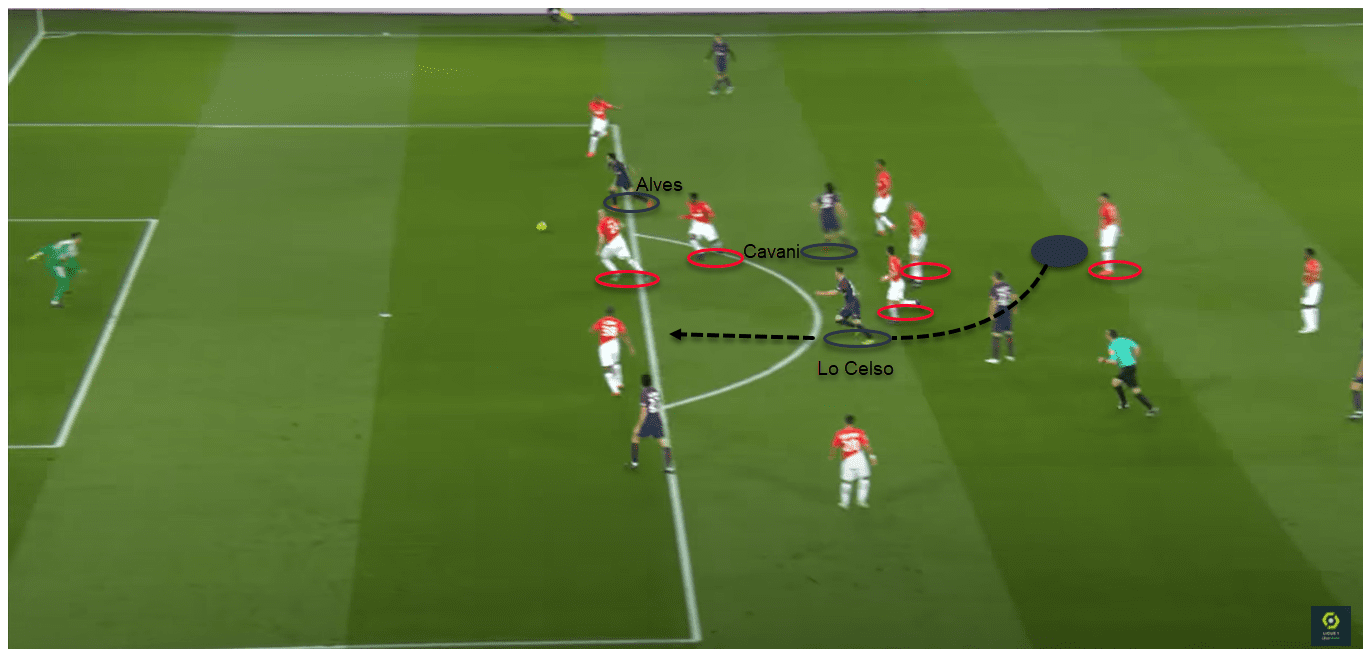
Lo Celso makes a run to receive a square pass from Dani Alves which results in a goal.
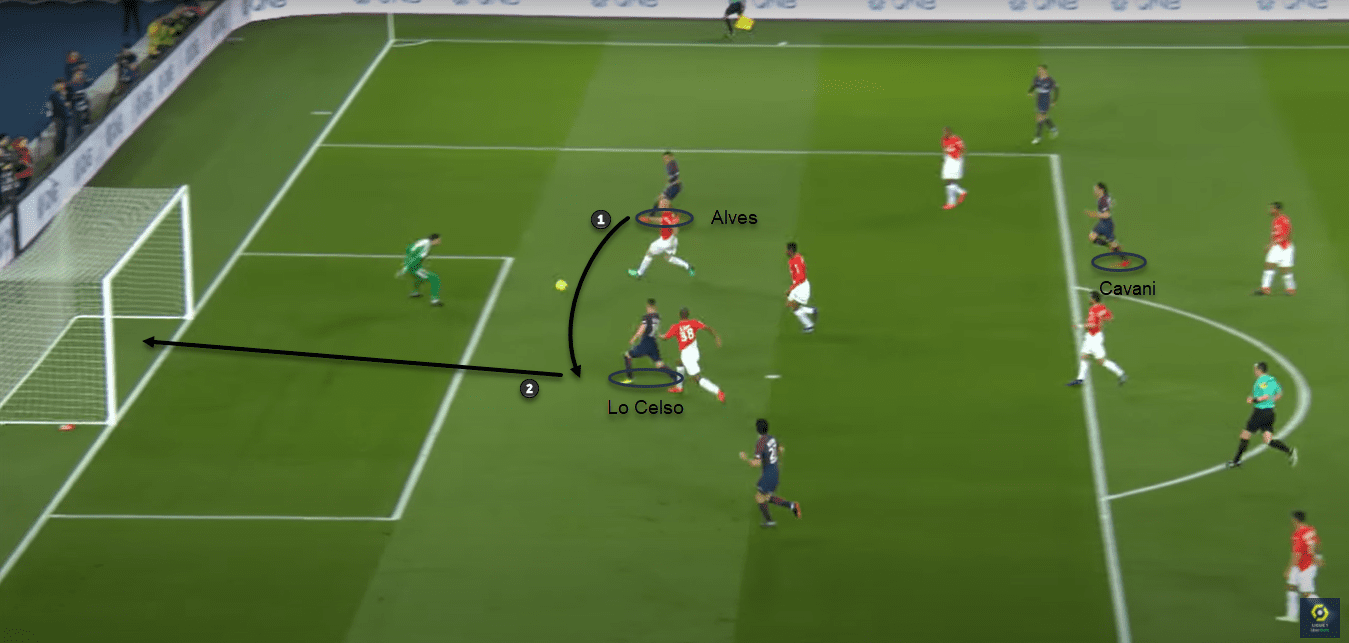
There is enough evidence to suggest that this event is very effective. Which raises the question, what makes these events successful? The answer will aid in formulating the principles of the move.
Look at the first picture of both events: 1) Focus on the body orientation of both strikers when they are receiving the ball – it suggests they already know where they are playing the next pass (one-touch pass in both cases). This helps in not giving enough time to defenders to think and organise and they are forced to react to the situation.
Now move to the second picture of both events: 2) Both Forsberg and Lo Celso have eagle eyes to identify space and they swiftly run in there. 3) Look at where the opposition defenders are looking in the second picture, all their heads are turned towards the ball. The ingenuity of their runs is not just moving into space but also against the movement of the second pass (blindside run) and it starts from deep (difficult to track).
After establishing the principles, it is important to note the contingencies of the event. There can be various contingencies like formation, players of specific positions involved, applicable in a certain area of the pitch only etc. However, the event picked for this analysis seems to be independent of these contingencies. The only requirement is the involvement of three players.
This widens the scope of use of this event in any formation. For example in 4-4-2 or 4-5-1 the RCM, RM and ST can combine. It’s also positionally independent and the event can occur in any area of the pitch. So can the full-backs combine with midfielders on the flanks to make underlapping/overlapping runs?
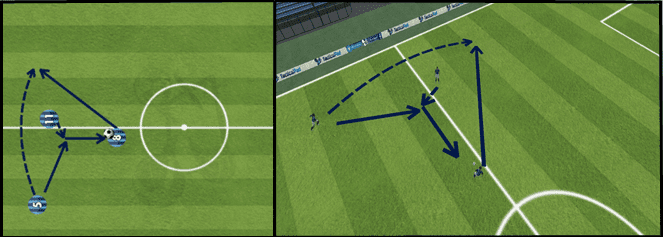
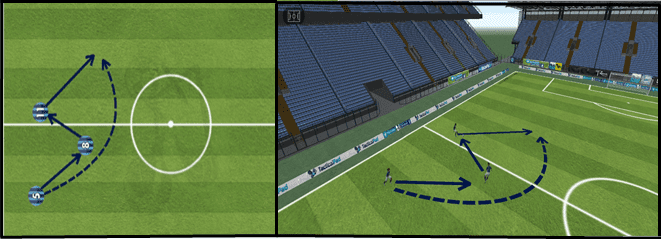
Yes, here’s a visual representation of Marcelo’s underlapping run to receive the ball when Real Madrid played Girona in 2018 using the same mechanism.
Can this be used in a counter-attack to facilitate interchanging runs?
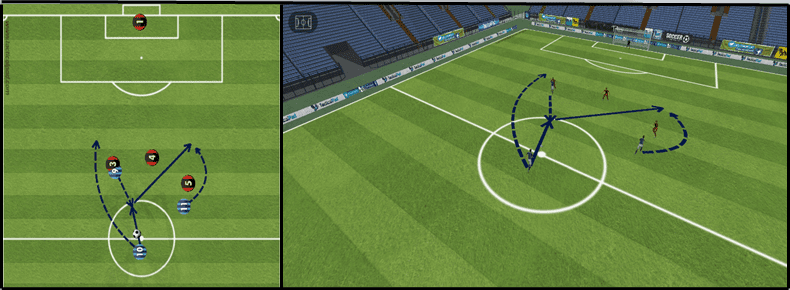

Absolutely, Chelsea fans will remember Torres’s UEFA Supercup goal in 2013 against Bayern Munich. I think it’s time to watch that again. And the above visual representation shows similar movement to that.
As a result, it shows that after defining the principles and contingencies, we can aggregate other relevant tactical concepts to the event to scale up our coaching. It provokes our thinking to find new ways to implement and test our coaching drill, to find new structure and implications of it. Eventually guides us to achieve dynamism in such scenarios.
Dynamic drills
A coach has very little control over the actions of his players in a match. A player would not have trained for every situation that he confronts in the match. Although a coach would always desire to train their players for all the possible situations, it’s quite impossible. However, improving their decision making through dynamic drills can serve as a great solution.
Dynamic drills don’t just work on the technical and tactical part of the game but challenge players with unforeseen situations, hence demanding them to make quick decisions to react to the process. It leverages a coach’s philosophy and ideas on the field and represents player intelligence at the same time.
Warm-up
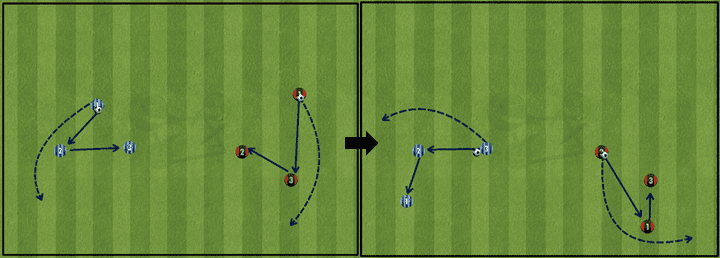
The purpose of the warm-up is to get the players moving, establishing focus for the session and having some fun. Once the players are done with stretching, strengthening and flexibility exercises, I try to entail some exercise with the ball in the warm-up.
Organisation
In an area of 20×25 yards with players in groups of three. Adjust the size based on the number of players as you want to ensure the space of the exercise.
Gameplay
The exercise involves a two-pass combination between the three players. If player 1 has the ball, he can pass to either player 2 or player 3. Then he makes the run behind him in space while the other player completes the second pass. The exercise resets when the third player receives the ball. It starts again with the third player having two options to pass. The passing option is open-ended for the players to themselves evaluate space and distance for the runs. The focus must be kept on movement and burst of speed as this is just warm-up and technical aspects like passing can be worked upon in the next exercise.
It is important to add an element of fun in the warm-up to regulate the emotion and keep them interested in the session. Keeping that in mind you can replace the passing with a throw and catch especially while working with a younger group. A competitive progression to this exercise is to have bins/baskets at the end of the line and the players can be divided into two teams. Again starting in groups of three from each team, they have to repeat the passing pattern but now with a throw-catch-head into the bin/basket. The team with maximum score wins, make sure you have a time limit on it.
Coaching Points
- Identify space
- Timing and angle of the run, against the movement of the ball (PERTAINING TO THIS SESSION ONLY).
- Short agile sprints
Technical exercise
Organisation
It’s a 4v2 possession drill in a square of 12-15 yards (depending on the quality of players).
Gameplay

The primary objective is for players in blue to try and keep possession against the defenders in red. Five passes are equal to getting one point. Another way to get a point is by executing the combination play. Player 3 is on the ball and player 4 comes inside the square to support. Once the player is inside the square, they are allowed only one touch. Player 4 leaves the space behind him for player 3 to run into. Player 3 must run against the movement of the ball and receive it from player 1. At least three passes must be completed before the next player starts the combination.
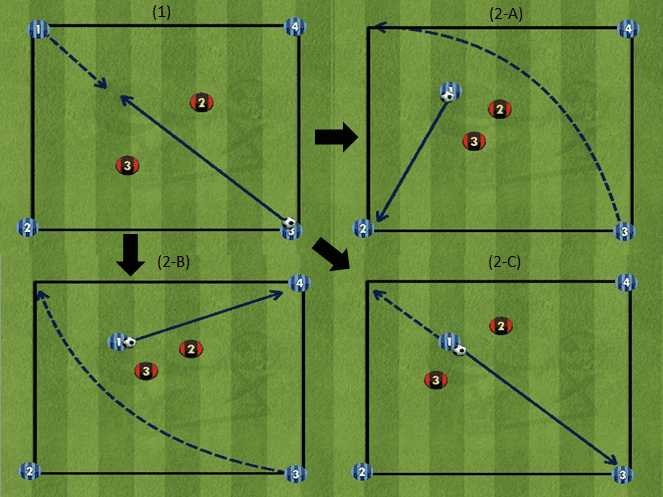
It is important for the player on the ball to read the body orientation of the player coming in support since that will indicate the direction on the second pass and therefore prompt a blindside run from the player.
Player 3 is on the ball and player 1 (diagonal player) comes to support in the box. Since player 1 has only one touch, he must pass on the half-turn to ensure a quality > 90° pass. Player 3 must-read his movement to know which side to run. In picture 2-A, player 1 opens his body towards player 2 to play first time. This is a clear indication for player 3 to run from the right (blind-side).
In picture 2-B the scenario is the same but this time player 1 opened his body towards player 4. Therefore player 3 must quickly get behind from the left and then receive a pass from player 4. In case of player 1 approaching the ball square/has pressure from behind which doesn’t let him turn/closed lateral passing channels (Picture 2-C), then he will want to play the pass back to player 3. In such situations player, 3 must hold his run.
Once the player understands the body orientation of the receiving players, their decision making will improve under these conditions. The player losing the ball possession must swap places with one of the defenders. The number of points won is equal to the number of push-ups/sprints for defenders. This will keep defenders motivated to win the ball quickly and challenge the four players.
Progression to this exercise could be two adjacent squares of 12×12 yards with three teams of four. One team in each square and the third team will be defending with two players in the box and two waiting outside. The players in possession must complete at least five passes and then switch the ball in the other box using the event combination only. After the switch is complete, the two defenders outside the box enter to press in the other box.
The team which loses possession becomes the defending team. Focus on being patient on the ball and not be predictable. Allow two-touches for the player entering the box to support if the age/quality of players demands and then progress to one touch.
Coaching points
- Weight and timing of the pass, get the right contact.
- When both defenders shift on one side, demand lateral support to commence the combination.
- When space opens up in between two defenders, demand diagonal support to commence the combination.
- Opening up the body towards the next pass before receiving the ball to play one touch.
- Read body orientation of the receiving player to make dynamic and quick runs.
- Know when to hold your run and support for a back pass.
- Priority to possession over the combination, don’t force the move.
Small-sided game
Small-sided game is to create game-like situations bearing in mind the technical, tactical, physical and psychological aspects of the game.
Organisation
4v4+1 (Neutral) in 25×30 yards with 2 goals on both ends and no goalkeepers.
Gameplay
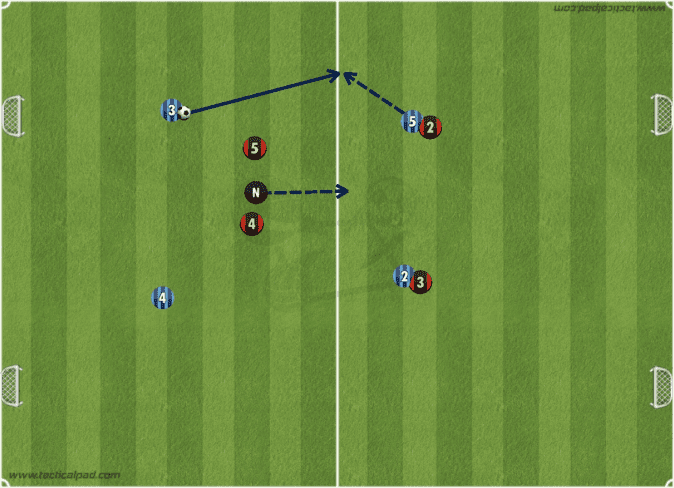
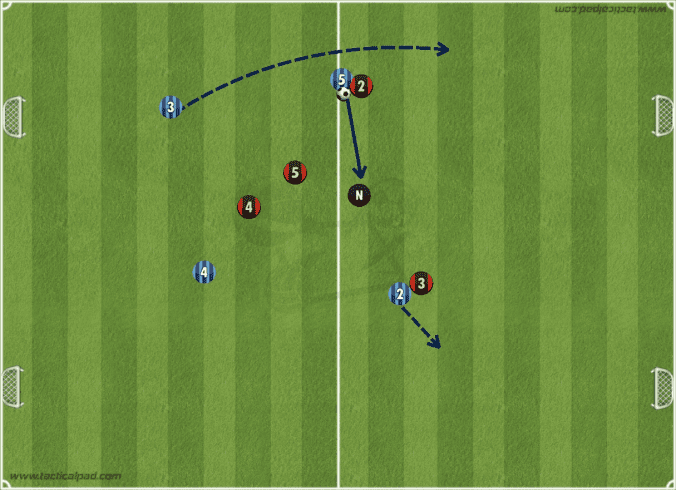
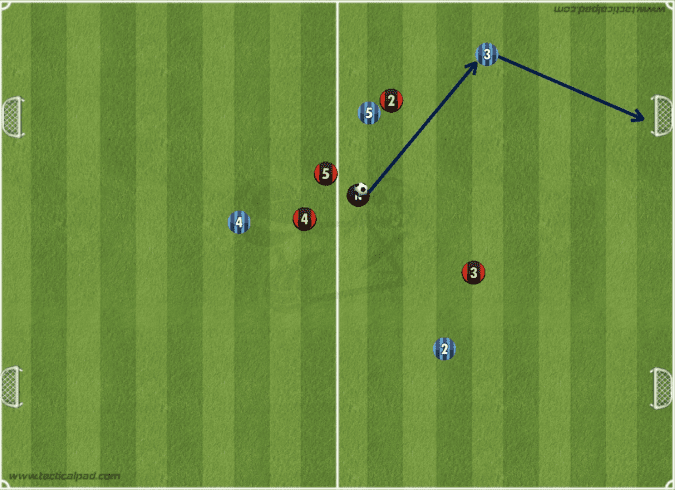
The neutral player plays for the team in possession. He is not allowed to score goals. Apply the same practices as trained in the technical session. A goal equals to one point and the goal from the combination play results to two.
In case of the ball going out, the coach restarts the play by offering possession to the other team. No set-pieces to be taken and the offside rule doesn’t apply.
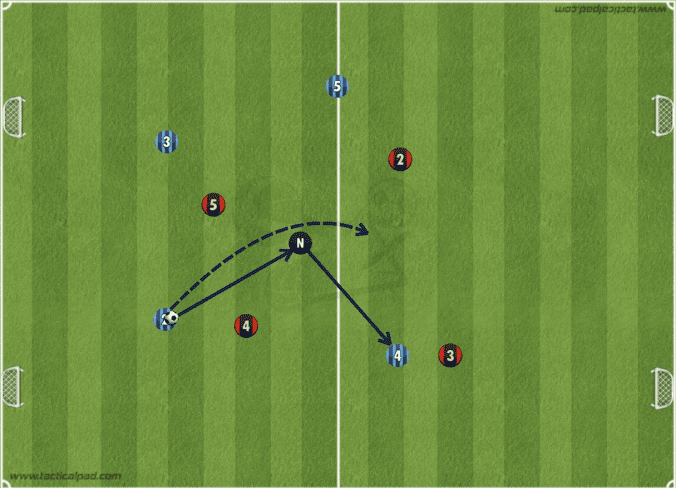
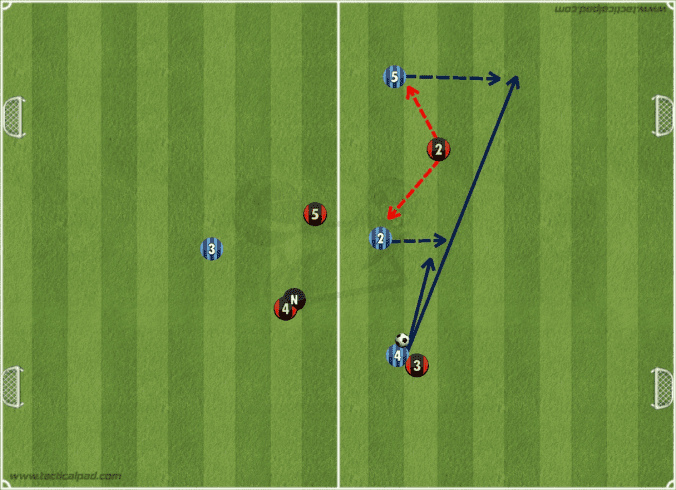
Coaching Points
- Encourage forwards to drop back/stretch wide to give support and create space.
- Use the neutral player as a freeman or create a freeman with the help of him.
- Time your run and assess danger associated with turnovers.
- Importance on picking optimum final pass and not necessarily go for 2 pointers always
Summary
Marcelo Bielsa said, “Little I say is original, I have learned almost everything from watching or taking from others”. Through the right eyes to examine and analyse match events, taking inspiration from one another, a coach can remodel and improvise their system.
It is then up to their imagination to extend the idea and give it a new footballing identity. But the nucleus of knowledge remains the same. After all, the game is the best teacher.





Comments